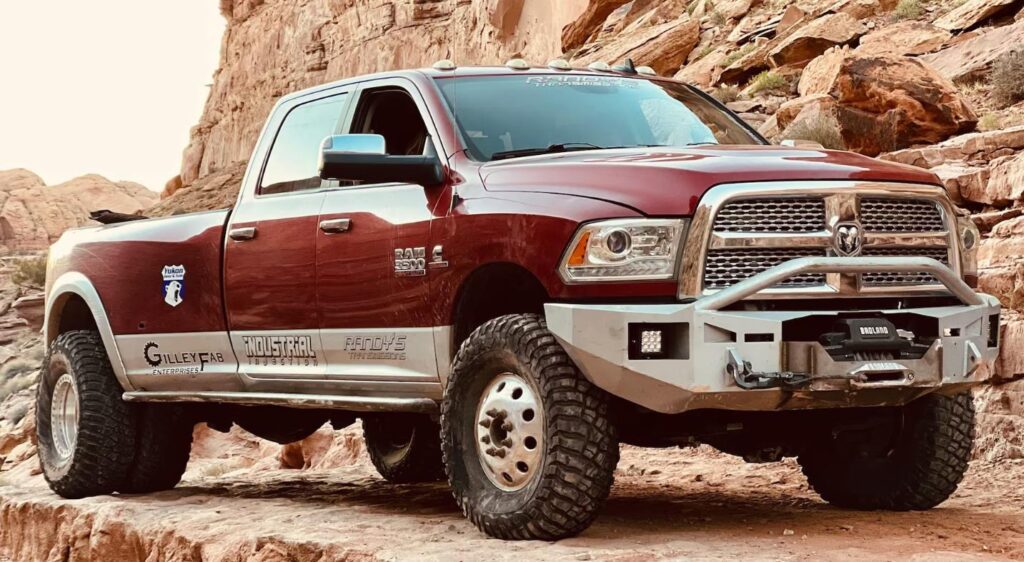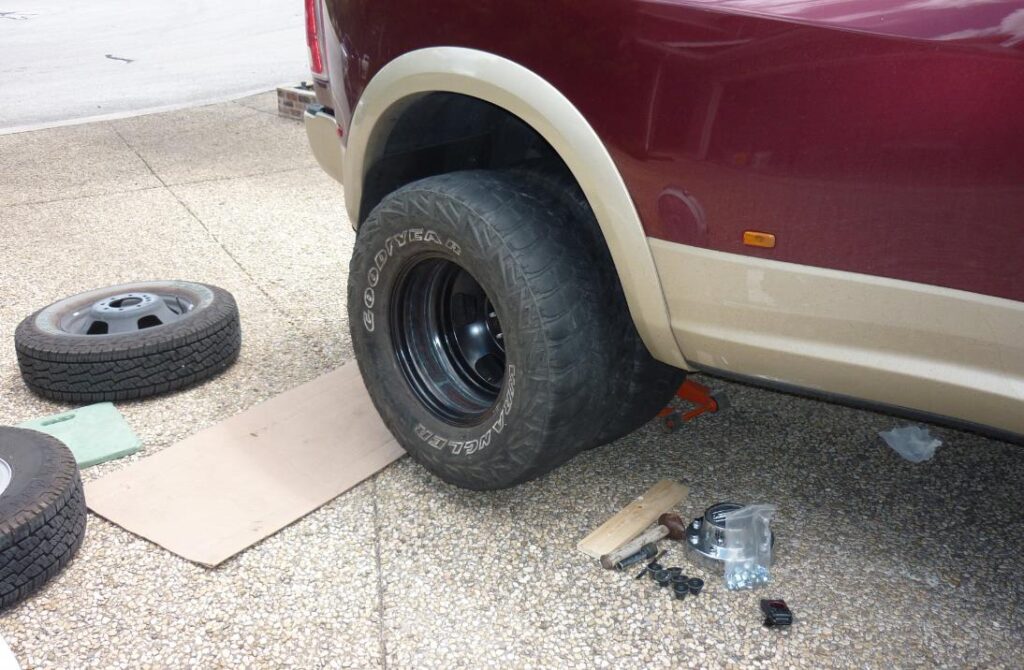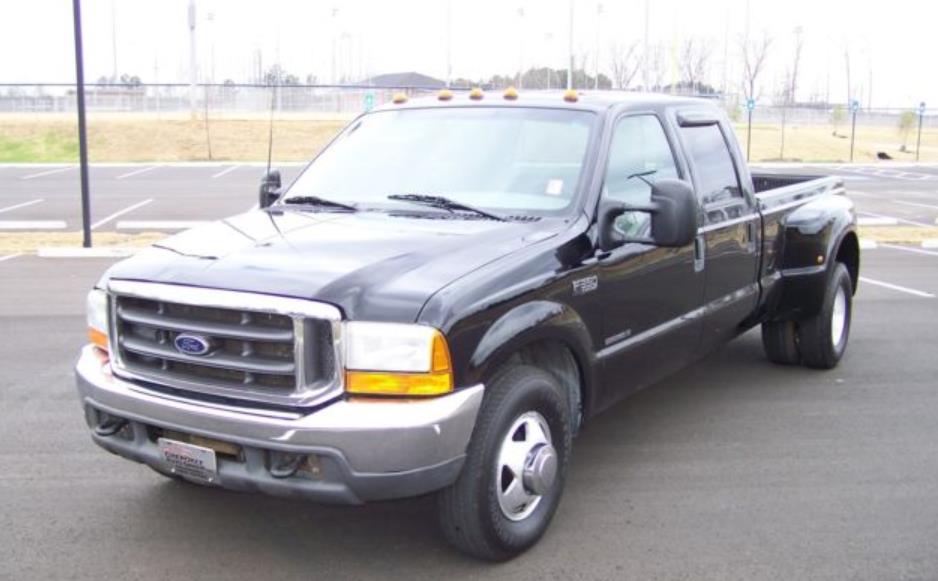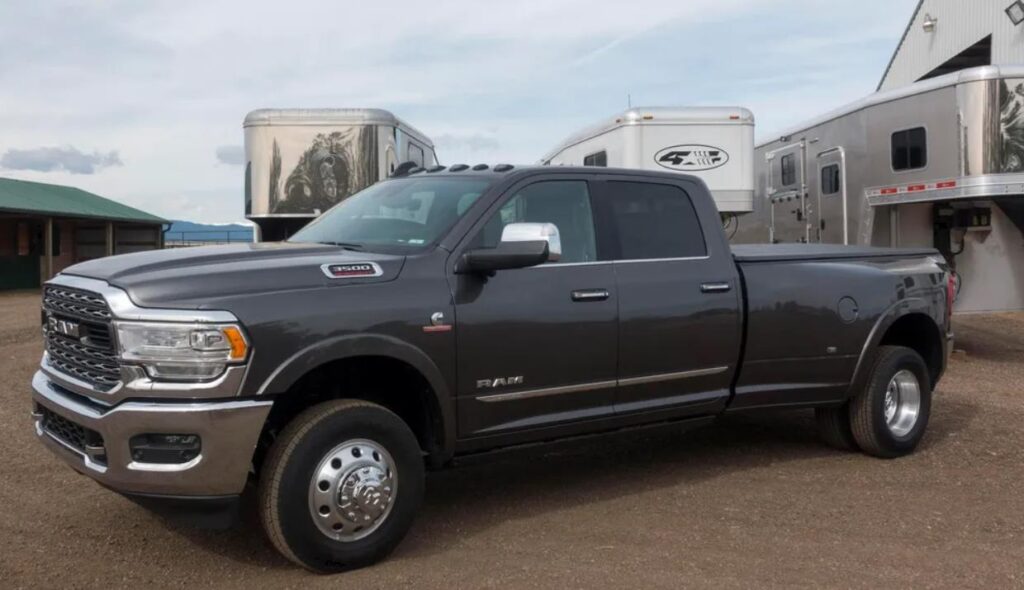How Wide Is A Dually Truck? How To Measure Width?
When it comes to trucks, size matters. One question that often comes up is, How Wide Is A Dually Truck? This article aims to provide a comprehensive answer to that question, along with other relevant information that truck enthusiasts or potential buyers might find useful.
Key Takeaways
- Dually trucks are generally wider than standard pickup trucks.
- The average width of a dually truck ranges from 96 to 102 inches.
- Width varies by make and model.
- Additional width can affect maneuverability and parking.
- Legal width limits exist and vary by jurisdiction.
How Wide Is A Dually Truck?
The width of a Dually Truck generally ranges from 80 to 96 inches, depending on the make and model. This measurement typically includes the dual rear wheels but excludes the side mirrors.

What Is a Dually Truck?
A dually truck, also known as a “dual rear wheel” truck, is a vehicle that has two wheels on each side of its rear axle instead of just one. This design provides additional stability and is often used in trucks that are designed for heavy-duty tasks like towing or hauling large loads.

Why Width Matters?
Importance of Width in Dually Trucks
The width of a dually truck is not just a random measurement; it plays a crucial role in the vehicle’s performance. A wider truck generally means better stability, especially when carrying heavy loads. However, the added width can also make the truck more challenging to maneuver in tight spaces.
Legal Considerations
It’s essential to be aware of the legal width limits for vehicles in your jurisdiction. In the United States, the maximum allowable width for a vehicle is generally 102 inches, excluding mirrors and certain safety devices.
Average Width of Dually Trucks
The average width of a dually truck can vary significantly depending on the make and model. However, most dually trucks have a width that ranges from 96 to 102 inches. Here are some examples:
| Make and Model | Width in Inches |
|---|---|
| Ford F-350 Dually | 96 |
| Ram 3500 Dually | 101 |
| Chevrolet Silverado | 100 |
Factors Affecting Width
Wheel Size
The size of the wheels can affect the overall width of the dually truck. Larger wheels may add to the width, while smaller wheels may reduce it.
Add-Ons and Modifications
Aftermarket add-ons like extended mirrors or fender flares can also add to the width of the truck. Always measure the truck’s width after any modifications to ensure it remains within legal limits.
How to Measure the Width? Or How to Calculate the Width of a Dually Truck?
Calculating or Measuring the width of a dually truck is a straightforward process. Here’s a step-by-step guide on how to accurately measure the width of a dually truck:

Step 1: Choose the Right Measuring Points
Dually trucks have two wheels on each side of the rear axle, making them wider than standard pickup trucks. Some people measure the width from the outside of the wheels or the fenders. However, the most accurate way to measure is from the outside of the side mirrors.
Step 2: Consider the Mirrors
Mirrors on towing vehicles like dually trucks are often wider than those on standard vehicles. This is to provide the driver with a better view of what they’re towing. These mirrors can add 15 to 18 inches to the overall width of the truck.
Step 3: Use a Tape Measure
Use a tape measure to find the distance from the outer edge of one side mirror to the outer edge of the opposite side mirror. Make sure the truck is parked on a level surface for the most accurate measurement.
Step 4: Check State Regulations
The maximum allowable width for a vehicle varies by jurisdiction. In the United States, the maximum width is generally 102 inches or 8.5 feet. Always double-check the rules and regulations for each state you’ll be driving through.
Step 5: Custom Modifications
If you have a custom truck bed or other modifications, these could affect the width. Always measure after any modifications to ensure you’re within legal limits.
By following these steps, you can accurately determine the width of your dually truck, which is crucial for various reasons like maneuverability, legal considerations, and performance.
Further Insights into Dually Trucks

Towing Capacity: The Powerhouse Advantage
Dually trucks are often the go-to choice for heavy-duty towing needs. Their superior towing capacity sets them apart from standard pickup trucks. Whether it’s hauling a large boat, a horse trailer, or heavy machinery, a dually truck is often the best option for the job.
Fuel Efficiency: What to Expect?
While dually trucks excel in many areas, fuel efficiency is generally not one of them. Due to their larger size and heavier weight, these trucks tend to consume more fuel. However, advancements in diesel engine technology are gradually improving the miles per gallon (MPG) you can expect from a dually.
Maintenance: Keeping Your Dually in Top Shape
Owning a dually truck comes with its own set of maintenance requirements. Due to the extra set of wheels, tire rotations, and alignments may be more frequent. Additionally, the braking system may experience more wear and tear due to the truck’s increased weight and size.
Cost of Maintenance
Maintaining a dually truck can be more expensive than a standard pickup due to the additional tires and the heavy-duty parts that may need replacement. Budgeting for these extra costs is crucial for long-term ownership.
Off-Roading Capabilities
Dually trucks are not typically designed for off-roading adventures. Their wide body and lower ground clearance make them less suitable for navigating rough terrains compared to specialized off-road vehicles.
Off-Road Modifications
While not ideal for off-roading, some enthusiasts do modify their dually trucks for such activities. Lift kits, specialized tires, and other modifications can enhance a dually’s off-road capabilities, but they also come with their own set of challenges and costs.
Parking and Storage: What You Need to Know?
The additional width of a dually truck can make parking a challenge, especially in urban areas with limited space. Some owners opt for specialized parking spaces or storage solutions to accommodate their vehicle’s size.
Parking Tips
When parking a dually, always be mindful of the space around you. The extra width can make it easy to misjudge distances, so take your time and consider using parking aids like rearview cameras or sensors.
Safety Features: Built to Protect
Dually trucks often come equipped with advanced safety features like stability control, anti-lock braking systems (ABS), and multiple airbags. These features aim to offset the challenges posed by the truck’s size and weight, enhancing overall safety.
What Is A Dually Truck Used For?
A dually truck is primarily used for heavy-duty towing and hauling tasks. The dual rear wheels provide better stability, improved traction, and greater weight-carrying capabilities compared to single-rear-wheel trucks. These trucks are commonly used for:
- Towing large trailers, RVs, and boats
- Hauling heavy loads like construction equipment
- Agricultural purposes, such as carrying livestock or feed
- Commercial applications, including delivery and transport services

How Much Does A Dually Truck Cost?
The cost of a dually truck can vary widely depending on the make, model, and additional features. However, the price range is generally between $40,000 and $80,000. Higher-end models with advanced features can cost well over $100,000.
- Base models: Around $40,000 – $50,000
- Mid-range models: Around $60,000 – $70,000
- Luxury models: $80,000 and above
How Wide Is A Ford F350 Dually?
The width of a Ford F350 Dually varies depending on the model year and configuration, but it generally ranges from 80 to 96 inches. The dual rear wheels contribute to the increased width, making it more stable for heavy-duty tasks.

How Wide Is A Chevy Dually?
The width of a Chevy Dually, specifically the Silverado 3500HD, is approximately 96.7 inches. This width includes the dual rear wheels, which provide the truck with enhanced stability and towing capabilities.
How Wide Is A Dually Wheel?
Dually wheels typically come in sizes ranging from 16-inch, 17-inch, to 19-inch. However, many dually owners opt for upsizing to a 20-inch wheel or even larger for a more aggressive look and better performance.
The width of the wheel itself can vary, but it’s designed to accommodate the dual-tire setup, providing better stability and load-carrying capacity.

How Are Dually Trucks Different From Other Trucks?
Dually trucks are distinct from standard pickup trucks mainly because of their dual rear wheel setup. This design allows for increased traction, making the vehicle less susceptible to sway from winds.
Dually trucks also have stronger rear axles, which enhances both their payload capacity and maximum towing capacity. These trucks are particularly useful for heavy-duty towing and hauling tasks.
Are Dually Trucks Reliable?
Dually trucks are generally considered reliable, especially for heavy-duty tasks. Their dual rear wheel setup provides better stability and traction, making them less prone to accidents while towing heavy loads.
However, they may not perform as well in snowy or muddy conditions when empty, as the weight is distributed over more wheels, reducing individual wheel traction.

How Wide Are Dually Beds?
The width of dually truck beds can vary depending on the model. However, the average width between the wheel housings is around 50.7 inches.
The overall box width, measured from side to side above the wheel housings, averages about 69.03 inches. These dimensions are crucial for understanding how much load you can carry.
How Wide Is 3500 Dually?
The width of a 3500 Dually can vary depending on the manufacturer and specific model. For instance, the Chevrolet Silverado 3500HD Dually has a width of approximately 96.7 inches without the mirrors.
It’s essential to note that these dimensions can change based on the year and any additional features or packages you may choose.

How Wide Is An F250 Dually?
The Ford F-250 does not come in a Dually configuration; the Dually starts from the F-350 series. The width of an F-350 Dually, however, is around 96 inches for the Dual Rear Wheel (DRW) versions without the mirrors. Again, these dimensions can vary based on the model year and additional features.
How Wide Is A Pickup Truck?
The width of a pickup truck can vary significantly depending on its category, compact, mid-sized, or full-sized, and the manufacturer.
For example, the width of a Dodge Ram 1500 varies from 79.4 inches to 82.1 inches depending on the year, while a Ford F-150’s width ranges from 79.2 inches to 79.9 inches. It’s crucial to consider these variations when purchasing a truck or a truck bed liner.
Conclusion
Understanding the width of a dually truck is crucial for various reasons, including maneuverability, legal considerations, and performance. The average width ranges from 96 to 102 inches, but it can vary depending on several factors like make, model, and any aftermarket modifications. Always be aware of the width of your truck, especially if you plan to use it for heavy-duty tasks.
Top FAQ’s
Why Is It Called a Dually Truck?
Dually trucks are named for their dual rear wheels. These trucks are designed for heavy-duty work like construction, towing, and transporting heavy cargo. The dual rear wheels significantly enhance their effectiveness at these tasks.
Are Dually Trucks Good for Off-Road Driving?
Dually trucks have pros and cons when it comes to off-road driving. Their heavyweight, distributed across six wheels, provides increased traction and stability. However, their size can make them difficult to maneuver on narrow roads, and they may get stuck in sand or mud.
How Does the Fuel Economy of a Dually Truck Compare to Standard Trucks?
Dually trucks generally consume more fuel than their four-wheeled counterparts. This is because powering a larger and heavier vehicle requires more gallons of fuel per mile traveled.

Welcome to the exhilarating world of Matt Rex, a professional car racer turned renowned vehicle enthusiast. Immerse yourself in his captivating blog as he shares heart-pounding adventures, expert reviews, and valuable insights on cars, trucks, jets, and more. Fuel your passion for speed and discover the beauty of vehicles through Matt’s engaging stories and meticulous expertise. Join the ever-growing community of enthusiasts who find inspiration and expert advice in Matt Rex’s blog—a digital hub where the thrill of speed meets the pursuit of knowledge.


![How To Fix A Leaky Back Window On A Truck? [Explained]](https://www.turbochaos.com/wp-content/uploads/2023/12/How-To-Fix-A-Leaky-Back-Window-On-A-Truck-768x535.jpg)

![Can You Register A Truck Under The GVWR? [Answered]](https://www.turbochaos.com/wp-content/uploads/2023/12/Can-You-Register-A-Truck-Under-The-GVWR-768x636.jpg)


